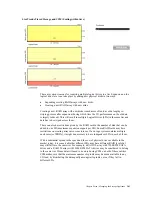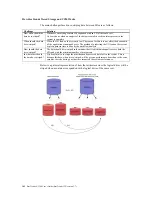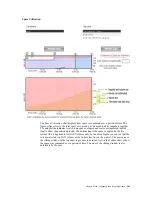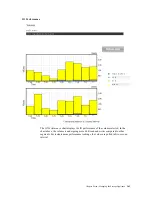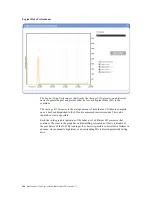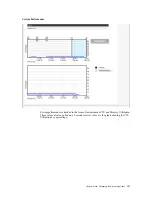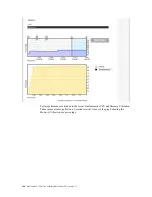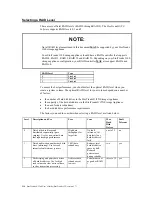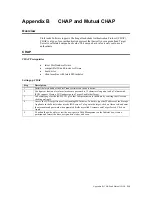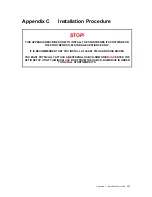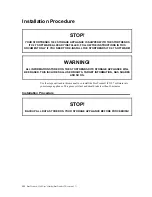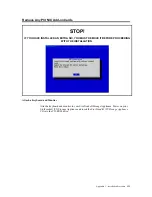
Appendix A : RAID
215
RAID 0
RAID 0 provides disk striping across all hard disk drives in the volume. RAID 0 does not
provide any data redundancy, but does offer the best performance of any RAID level.
RAID 0 breaks up data into smaller blocks and then writes a block to each hard disk drive
in the volume. The size of each block is determined by the stripe size parameter, set
during the creation of the RAID set. RAID 0 offers high bandwidth.
By breaking up a large file into smaller blocks,
StorTrends® iTX Software
can use
multiple IDE/SCSI channels and hard disk drives to read or write to the file faster. RAID
0 involves no parity calculations to complicate the write operation. This makes RAID 0
ideal for applications that require high bandwidth but do not require fault tolerance.
Point Description
uses
RAID 0 provides high data throughput, especially for large files. Any environment that does not
require fault tolerance.
strong points
Provides increased data throughput for large files. No capacity loss penalty for parity.
weak points
Does not provide fault tolerance. All data lost if any hard disk drive fails.
hard disk drives
One to 32 hard disk drives
RAID 1
RAID 1 duplicates all data from one hard disk drive to a second hard disk drive. RAID 1
provides complete data redundancy, but at the cost of doubling the required data storage
capacity.
Point Description
uses
Use RAID 1 for small databases or any other environment that requires fault tolerance but small
capacity.
strong points
RAID 1 provides complete data redundancy. RAID 1 is ideal for any application that requires
fault tolerance and minimal capacity.
weak points
RAID 1 requires twice as many hard disk drives. Performance is impaired during hard disk drive
rebuilds.
hard disk drives
Two hard disk drives
Summary of Contents for ManageTrends 2.7
Page 18: ...StorTrends 1300 User s Guide StorTrends iTX version 2 7 xviii...
Page 24: ...StorTrends 1300 User s Guide StorTrends iTX version 2 7 6...
Page 33: ...Chapter Two Chassis Set Up 15 Accessing the Inside of the System...
Page 60: ...StorTrends 1300 User s Guide StorTrends iTX version 2 7 42...
Page 64: ...StorTrends 1300 User s Guide StorTrends iTX version 2 7 46...
Page 70: ...StorTrends 1300 User s Guide StorTrends iTX version 2 7 52...
Page 100: ...StorTrends 1300 User s Guide StorTrends iTX version 2 7 82...
Page 106: ...StorTrends 1300 User s Guide StorTrends iTX version 2 7 88 Control Panel...
Page 236: ...StorTrends 1300 User s Guide StorTrends iTX version 2 7 218...
Page 256: ...StorTrends 1300 User s Guide StorTrends iTX version 2 7 238...
Page 277: ...Appendix E Replication Overview 259 Snap Assisted Replication Navigating with ManageTrends...
Page 281: ...Appendix E Replication Overview 263 Replication SAR view Primary Box SAR view Secondary Box...
Page 285: ...Appendix E Replication Overview 267 After Failover Operation in Secondary Box...
Page 300: ...StorTrends 1300 User s Guide StorTrends iTX version 2 7 282...
Page 308: ...StorTrends 1300 User s Guide StorTrends iTX version 2 7 290...
Page 330: ...StorTrends 1300 User s Guide StorTrends iTX version 2 7 312...
Page 356: ...StorTrends 1300 User s Guide StorTrends iTX version 2 7 338...

